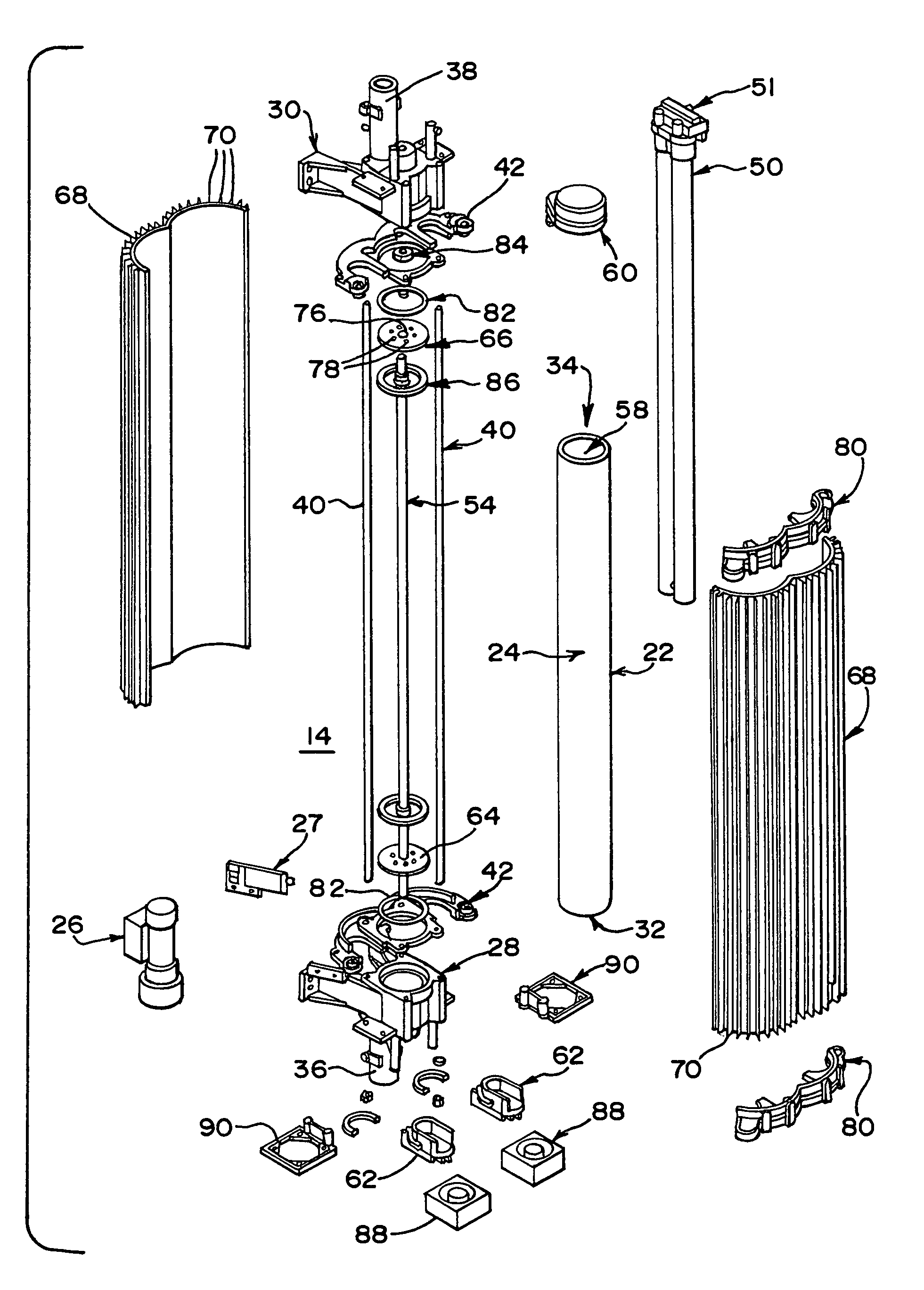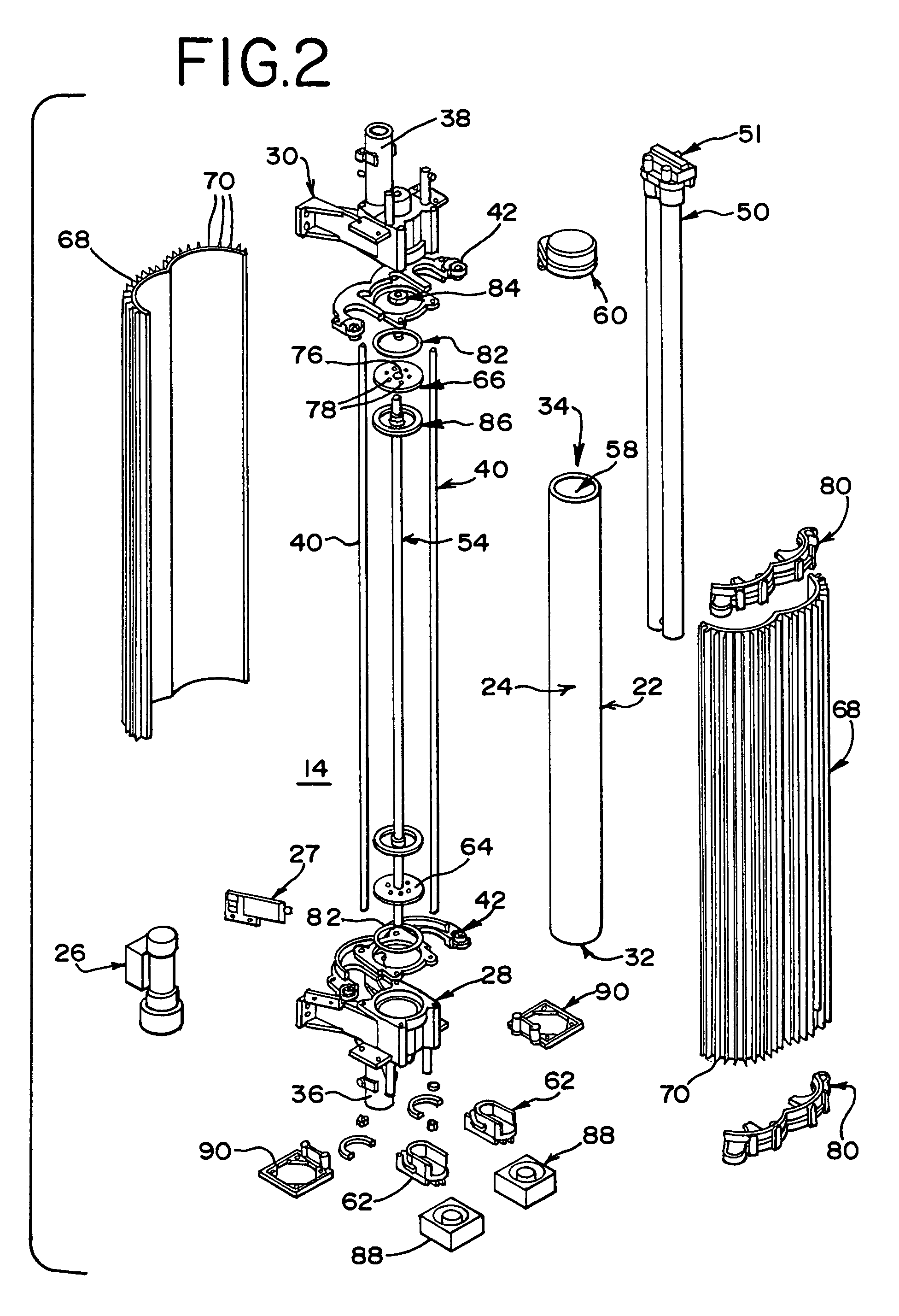Ultraviolet sterilization device
a sterilization device and ultraviolet light technology, applied in the direction of multi-stage water/sewage treatment, instruments, separation processes, etc., can solve the problems of reducing the efficacy of the device, reducing transmission, and affecting the efficiency of the device, so as to enhance the efficiency and consistency of the apparatus, improve the effect of effectiveness and increase light penetration
- Summary
- Abstract
- Description
- Claims
- Application Information
AI Technical Summary
Benefits of technology
Problems solved by technology
Method used
Image
Examples
Embodiment Construction
[0023]FIG. 1 illustrates one embodiment of subassemblies of an apparatus 10 according to the present invention. A back body housing 12 defines a chamber in which a UV chamber subassembly 14 is positioned. A front body cover 16, when fastened to the back body housing 12 effectively encloses the UV chamber subassembly 14. An electronic subassembly 18 fastens to an upper end of the back and front body covers 12, 16. It will be understood that reasonably different arrangements which function in an equivalent fashion and different appearances of the subassemblies are contemplated by the present invention. Furthermore, it will be understood that it is considered within the current state of the art for one to design appropriate circuitry to provide the functionality of the apparatus of the present invention.
[0024]An embodiment of the UV chamber subassembly 14 according to the present invention is illustrated in FIG. 2. It will be understood that the elements of the subassembly 14, describe...
PUM
| Property | Measurement | Unit |
|---|---|---|
| wavelengths | aaaaa | aaaaa |
| heat dissipating | aaaaa | aaaaa |
| heat conductive | aaaaa | aaaaa |
Abstract
Description
Claims
Application Information
 Login to View More
Login to View More - R&D
- Intellectual Property
- Life Sciences
- Materials
- Tech Scout
- Unparalleled Data Quality
- Higher Quality Content
- 60% Fewer Hallucinations
Browse by: Latest US Patents, China's latest patents, Technical Efficacy Thesaurus, Application Domain, Technology Topic, Popular Technical Reports.
© 2025 PatSnap. All rights reserved.Legal|Privacy policy|Modern Slavery Act Transparency Statement|Sitemap|About US| Contact US: help@patsnap.com



